Material science has spoiled 3D printing enthusiasts. Having nailed the filament production process down to allow quality standard materials, like PLA and PETG, to be sold at just ~$20 per kilogram. There are plenty of high-quality filament suppliers offering mild alterations of the same effective formula, and most of them work more-or-less just as well.
But material science has more to offer our filament, friends. And though you can almost always grab a spool of whatever PLA you see on sale, there’s more to 3D printing materials than just getting whatever is cheapest and works.
In this article, we go over a wide variety of incredible, and often less common, filaments through a fit-for-purpose lens and suggest some of the best options we know of. If you have a particular need in mind or are trying to go beyond standard materials to get something that prints stronger, faster, lighter, more reliably, or just a little better for the environment, we’ve got you covered below.
Note that this isn’t a review article. Unless otherwise specified, we haven’t tested these materials. Rather, this is an article to save you some of the leg work involved in digging around for the best filament for your purpose. With that said, we’ll let you know if we’ve tried a material and what our thoughts are on it – updating as we get our hands on more of the materials featured on this list.
We’re organizing this article by purpose alone – materials like PLA, PETG, or ABS will all come up as appropriate and sometimes together. If you’re looking for the best of a specific material, try some of our other filament guides listed at the bottom of this article. These lists will be unranked unless otherwise mentioned, but we’ll try to put the “best fits” first. The article is also far from exhaustive, so use the suggestions as a jumping-off point and see what else you can find!
General Purpose (Low Tolerance) Filament
If you’re looking for the best filament you can use for most of your 3D printing, you probably want to start by looking at tolerances.
Tolerance is a measure of filament diameter variance. Having a consistent diameter is very important for 3D printing — too much variance and you’ll experience over and under extrusion that can lead to visible flaws and failed prints. For this reason, you can loosely consider filament tolerance to be the measure of overall quality. That said, going from +/- 0.03 to +/- 0.02 mm won’t necessarily make a noticeable difference to your prints. But it could prevent some problems from cropping up, like clogs.
Quality filament tolerances tend to start around +/- 0.05 mm and go down from there. Lower is better. The filaments listed here all meet +/- 0.02 mm tolerance – which we consider highly accurate for consumer filament.
MatterHackers PRO Series
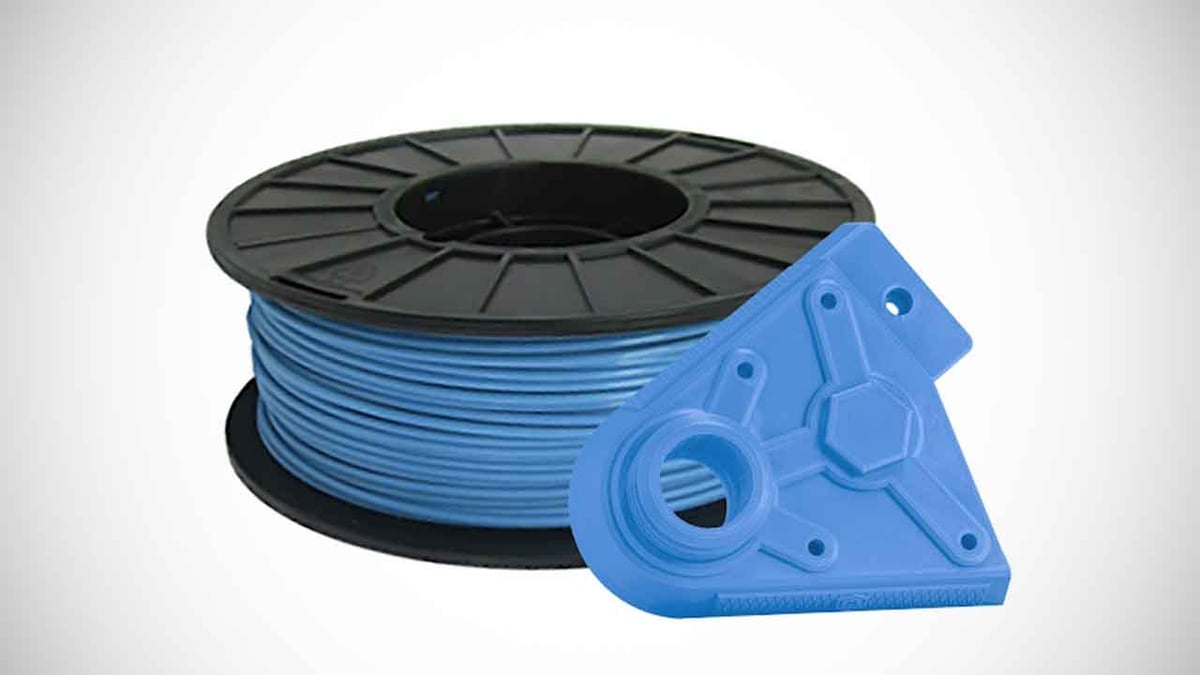
US-based MatterHackers produces a professional-quality filament that conforms to a tolerance of +/- 0.02 mm of its label diameter. The company offers PRO filament in a variety of base materials, including PLA, PETG, TPU, and more. Unfortunately, MatterHackers only ships to the US and Canada, so you may have a hard time getting its products outside North America.
Prusament
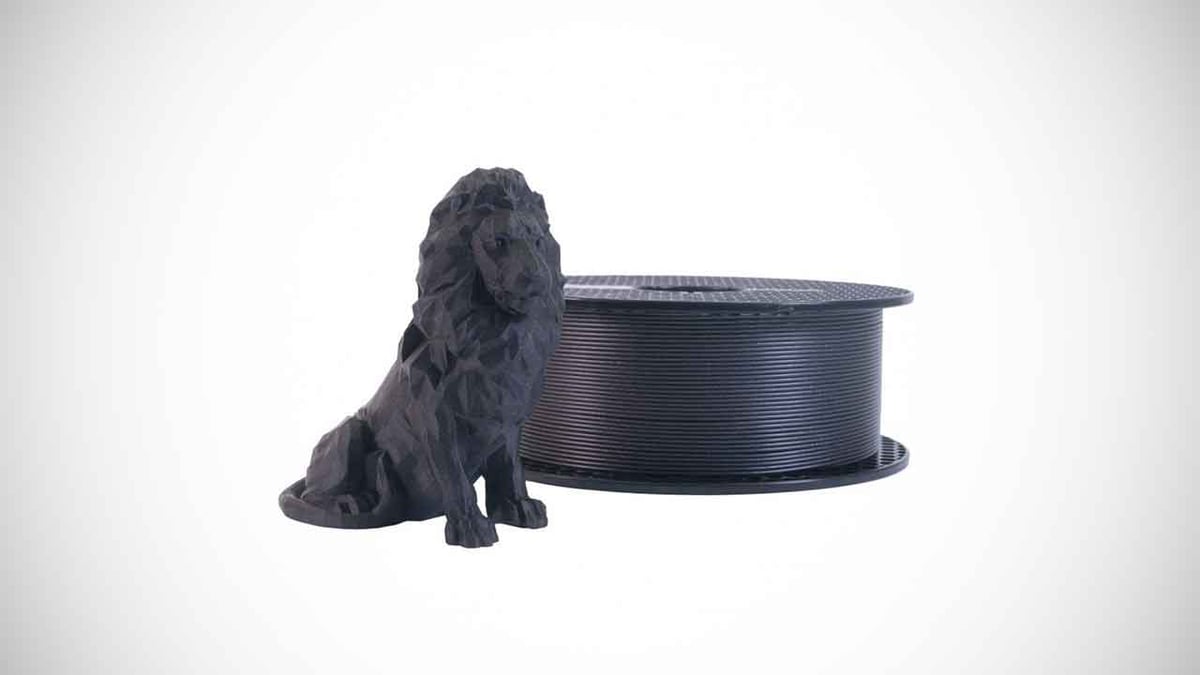
The PLA and PETG filament produced by Czech-based Prusa Research is within +/- 0.02 mm of its intended diameter. If you’re outside North America, Prusament is probably your best option for filament with tolerances this low. The company also produces PVA filament, but its tolerance is just slightly higher at +/- 0.03 mm.
FilaTex3D
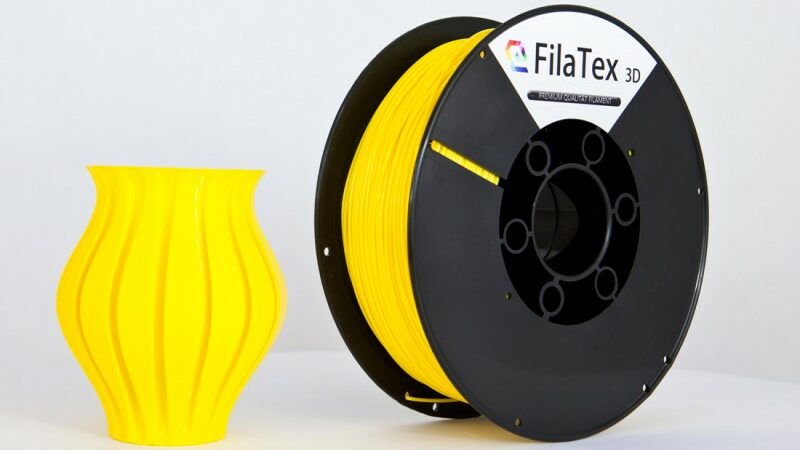
FilaTex3D is a German filament manufacturer with competitive pricing. In fact, some of its specialty S-line filaments go for as low as $15, with their 1KG spools hitting the upper $20 mark.
The company offers a range of materials in plenty of colors, but it seems only its PLA and ASA are available with this top-quality tolerance. However, the company only ships within Europe (expect Switzerland and Lichtenstein).
Budget Filament
If there’s one reason we all look for new filament from time to time, it’s to save a buck. Maybe you’re budgeting for some early prototypes where quality isn’t your first concern, or maybe you’re just looking for a daily driver that won’t break the bank. Here are some great options. Keep in mind we’re not listing the absolute cheapest filaments out there, but materials we believe you can expect a good experience from for a relatively low price.
There used to be a lot of low-quality filament around at nearly half the price of today’s standard quality filament, but you’ll be hard-pressed to find anything below $20 per kilogram outside of a sale now. That said, buying in bulk or in bundles can help — it’s an especially good option if you’re planning to stock some variety of colors anyways.
MatterHackers Build Series

The MatterHackers Build series of filament ranges with a lower tolerance (+/- 0.03 mm). It’s available in PLA, ABS, and PETG for around $20 per kilogram. The company offers the material in bulk, too, reducing costs to around $16 per kilogram from ten spools (~$160 per 10 kg).
Polymaker PolyTerra PLA

Polymaker is a reputable filament manufacturer that’s been on the scene for a long time. Its PolyTerra PLA filament, intended as an environmentally PLA option, has become a very popular material choice due to its relative environmental friendliness and low cost.
At just $20, PolyTerra competes with some of the least costly filaments around. Combined with a cardboard spool and Polymaker’s promise to plant a tree in the region of every spool purchased, it’s a great choice. But not just for the loose environmental aspects — PolyTerra is a great material that we’ve found adheres well, prints in good quality, and have generally had good experiences with.
Food-Safe Filament
Making something for your kitchen? A picnic? All materials listed here are FDA-approved for use with food. Keep in mind, standard PLA and PETG are considered food-safe, but manufacturers may include unusual additives that are not. Even if they are, the layer creases in a 3D printed part are a breeding ground for bacteria, so mind how you clean these and consider finishing prints with a food-safe resin. Also, consider reading more about food-safe 3D printing to catch some unexpected details – like how brass nozzles may contain lead.
Here, we list filaments that have undergone the FDA approval process. Many materials in other categories are likely also FDA-approved, but we’ve listed materials that we think stand out for one reason or another.
Fillamentum NonOilen

Fillamentum’s NonOilen is a fascinating material that’s both FDA-approved and dishwasher-safe to help keep cleaning simple. Many filaments, like PLA, wouldn’t be able to stand the heat of a dishwasher. The company believes in its material enough that it even released its own cup design, which is stated to be used around the Fillamentum office.
Taulman t-glase
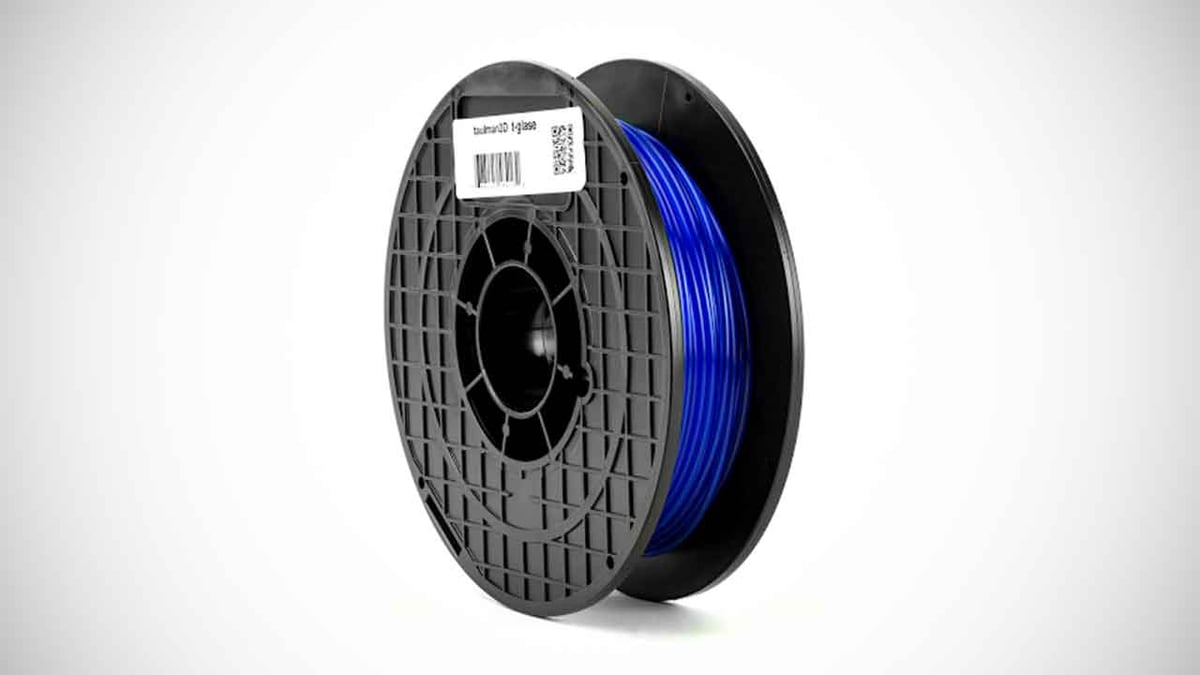
One of the earliest popular PETG materials, t-glase is still a strong material choice. It’s an FDA-approved material that’s been used for years. Its transparency might make it especially appealing as a piece for your kitchen.
Filaments.ca FDA-Approved PLA
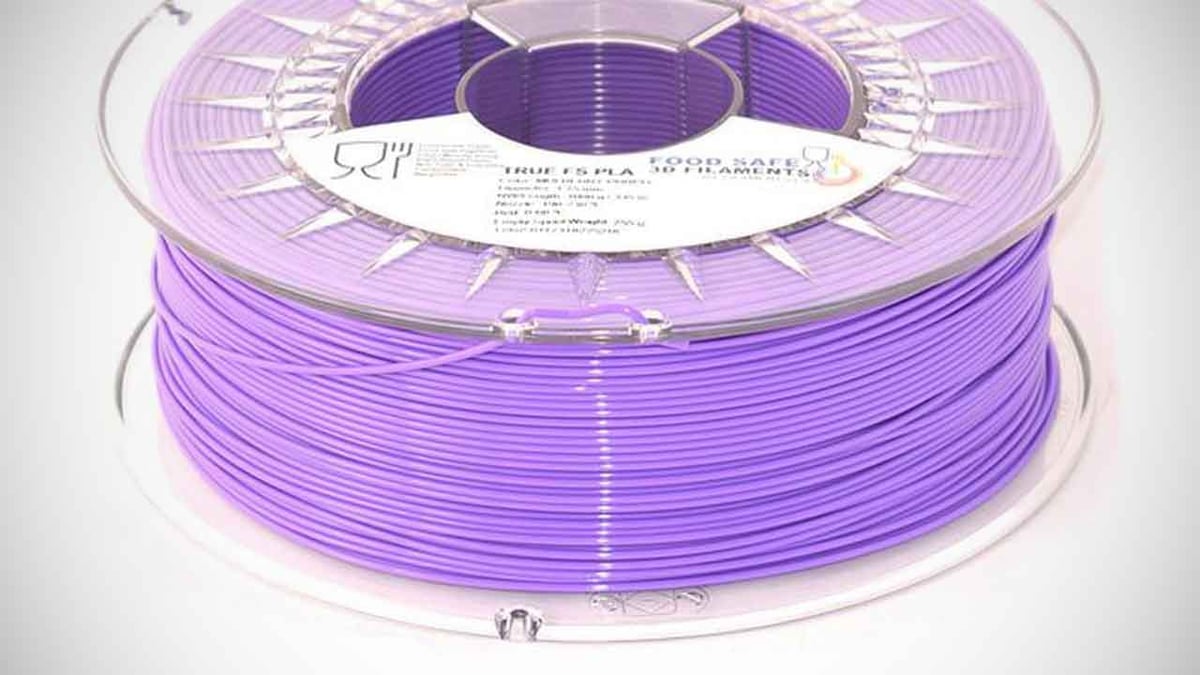
Filaments.ca was one of the first 3D printing material suppliers to undergo the FDA approval process, and both its True Food Safe PLA and EconoFil Standard PLA are still great for the purpose.
Color Variant Filament
Sometimes, you want a standby material supplier with a little aesthetic variety. A company that offers something you can get used to, but with enough color options to change things up when you want – and which doesn’t require tweaking your profiles to accommodate. The truth is, a lot of suppliers can accommodate this need. Here are just a few who offer what we think is a good variety of colors in the same material.
Prusament PLA & PETG

Prusa Research’s line of materials, Prusament, is offered in PLA, PETG, and more base materials. All come in a wide variety of colors, so you should find what you need for any project. They’re also one of our high-quality picks and will definitely play nicely with your Original Prusa 3D printer.
Hatchbox PLA
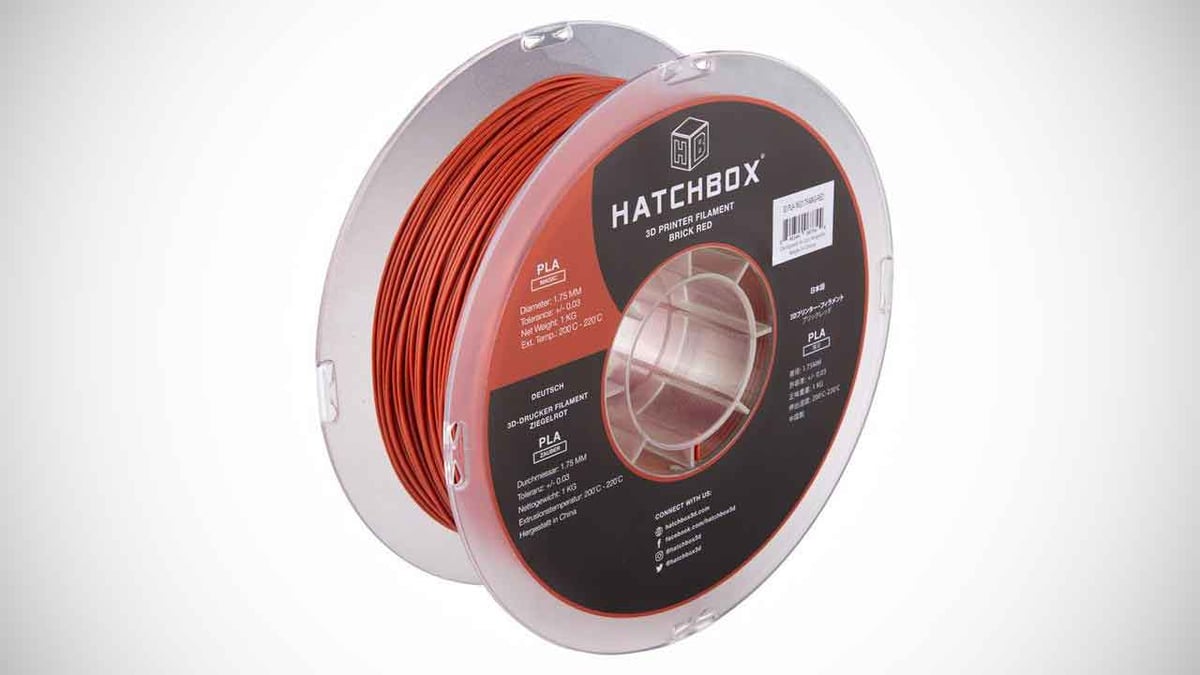
Hatchbox offers a plethora of PLA filament variations, both in color and finish. The company’s materials are very popular due to this variety and overall quality, given the solid material tolerance of +/- 0.03 mm.
Fillamentum Extrafill PLA
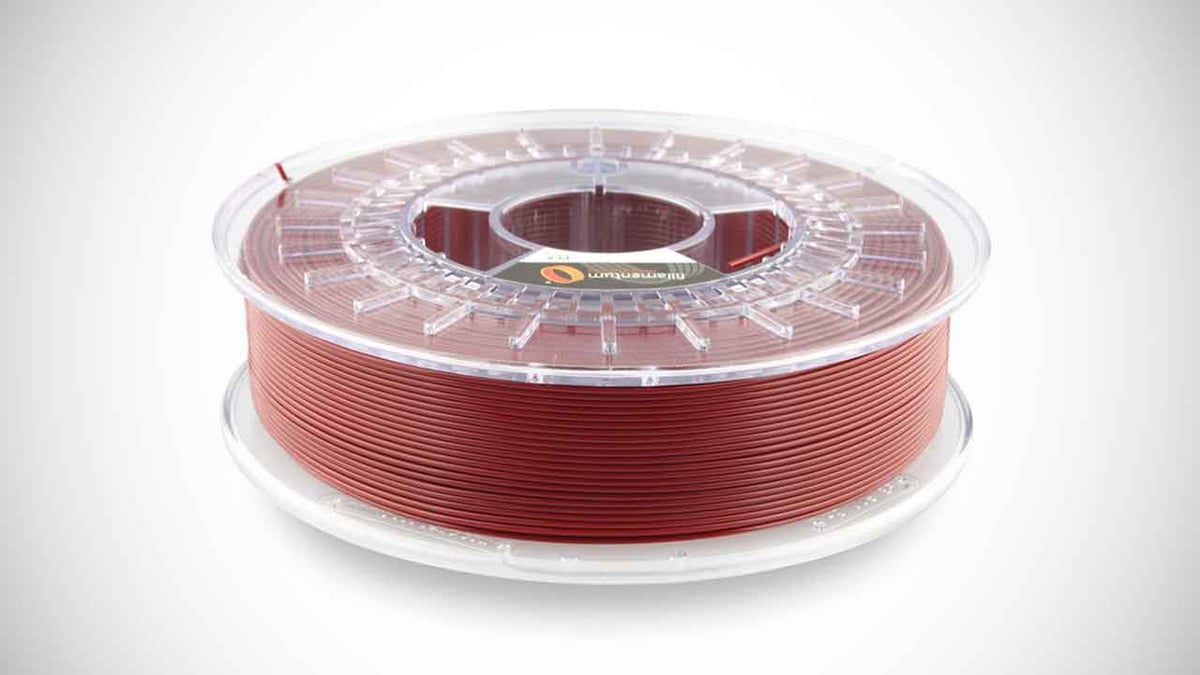
Fillamentum’s Extrafill PLA is both safe for use with food (like most PLA) and available in 60 variations of its PLA.
Support Material Filament
If you have a dual extruder handy, you can do yourself a favor and make post-processing a little easier by printing supports with specialized support material. Most people do this with a water-soluble material like PVA – which makes support removal really hands-off – but there are also support materials designed to just have weaker bonding with other filaments for manual removal and sometimes they’re cheaper. Here, we’ll list some materials of both varieties.
Sainsmart PVA
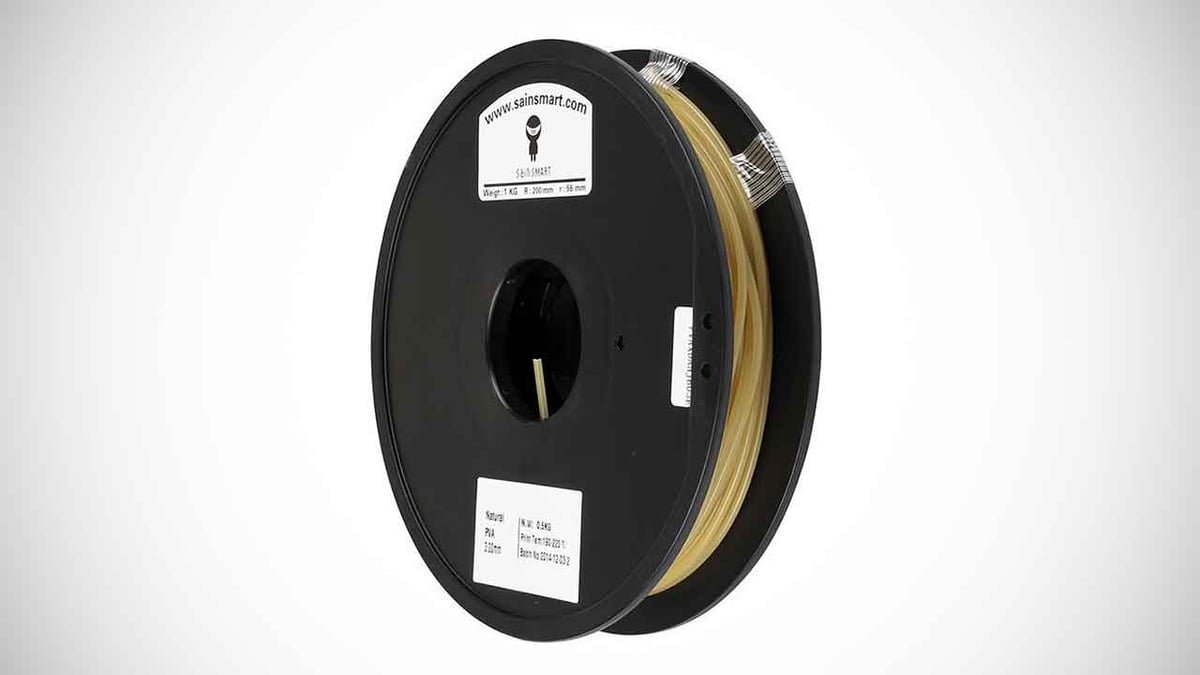
PVA should be your first thought when you’re looking for water-soluble support material. It adheres well to PLA and can be found relatively cheap. We think Sainsmart’s ~$35 offering for 0.5 kg of PVA is a great price for water-soluble supports.
Formfutura BVOH
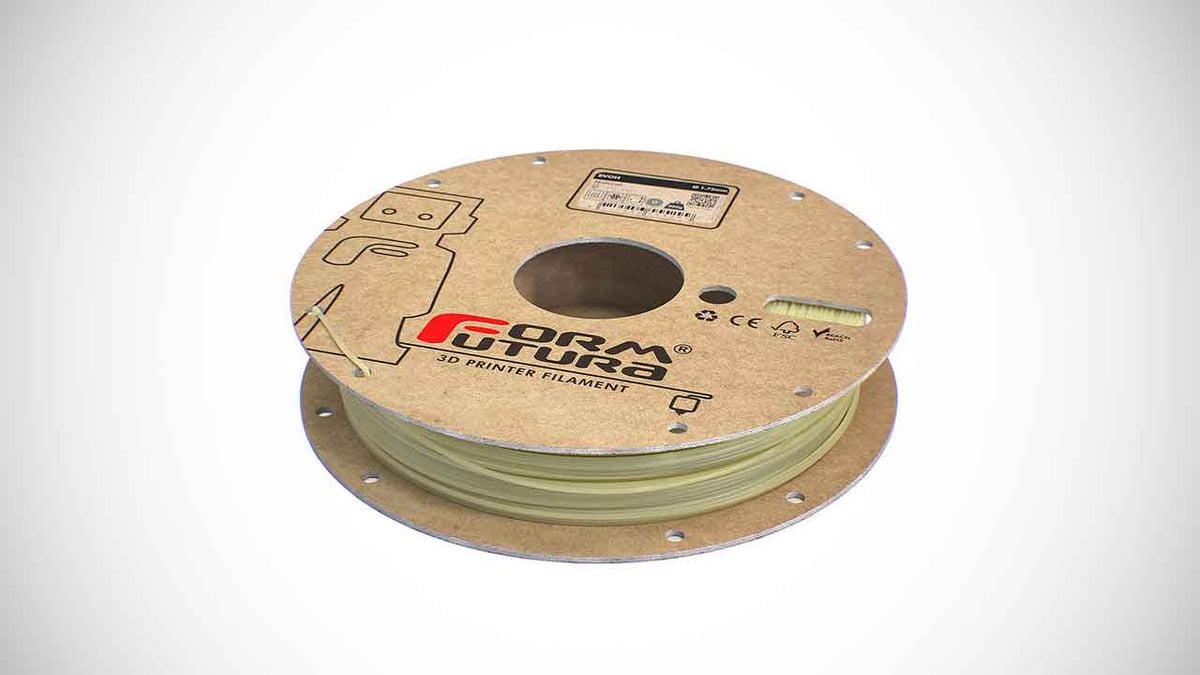
BVOH is a water-soluble material like PVA, but is often considered to dissolve faster and bond better with materials other than PLA. However, it will cost you a little more. If you need to put geometrically complex parts to work fast, this material is a good solution.
MatterHackers PRO Breakaway Support
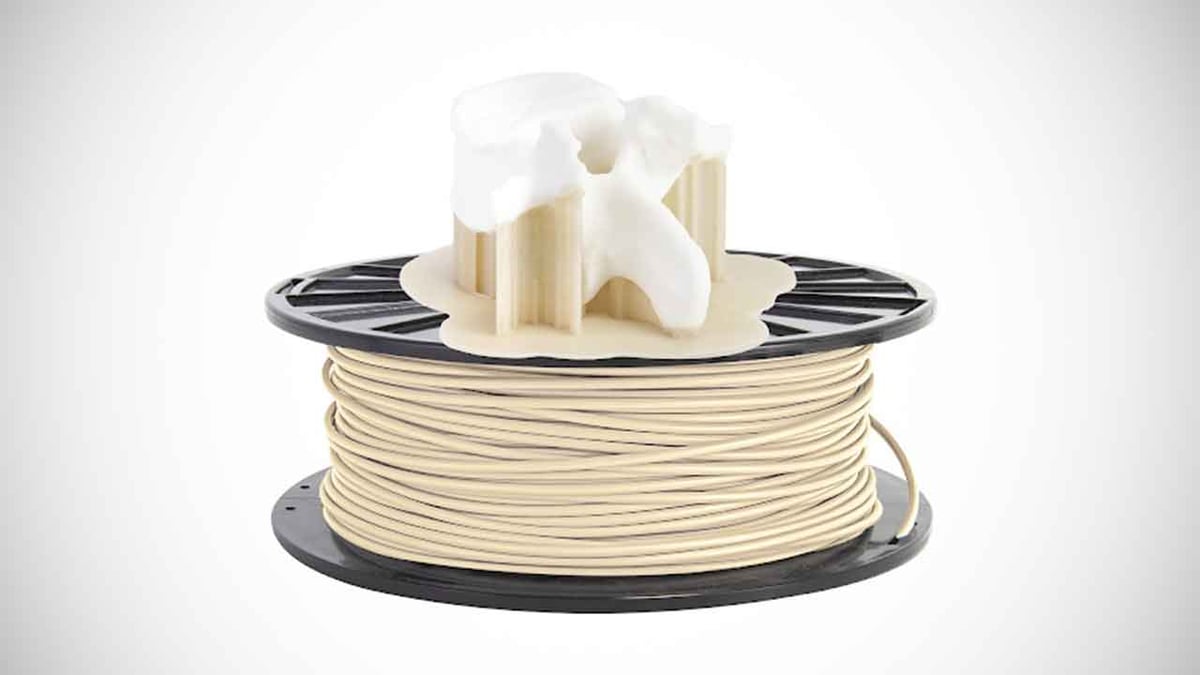
If you need parts ready in an instant, you’ll want to stick with breakaway supports. Some materials like MatterHackers PRO Breakaway Support are designed to have somewhat weaker bonding with other materials to be removed easily and cleanly. Materials should still adhere to each other well enough during printing, it just makes post-processing easier.
PolySupport
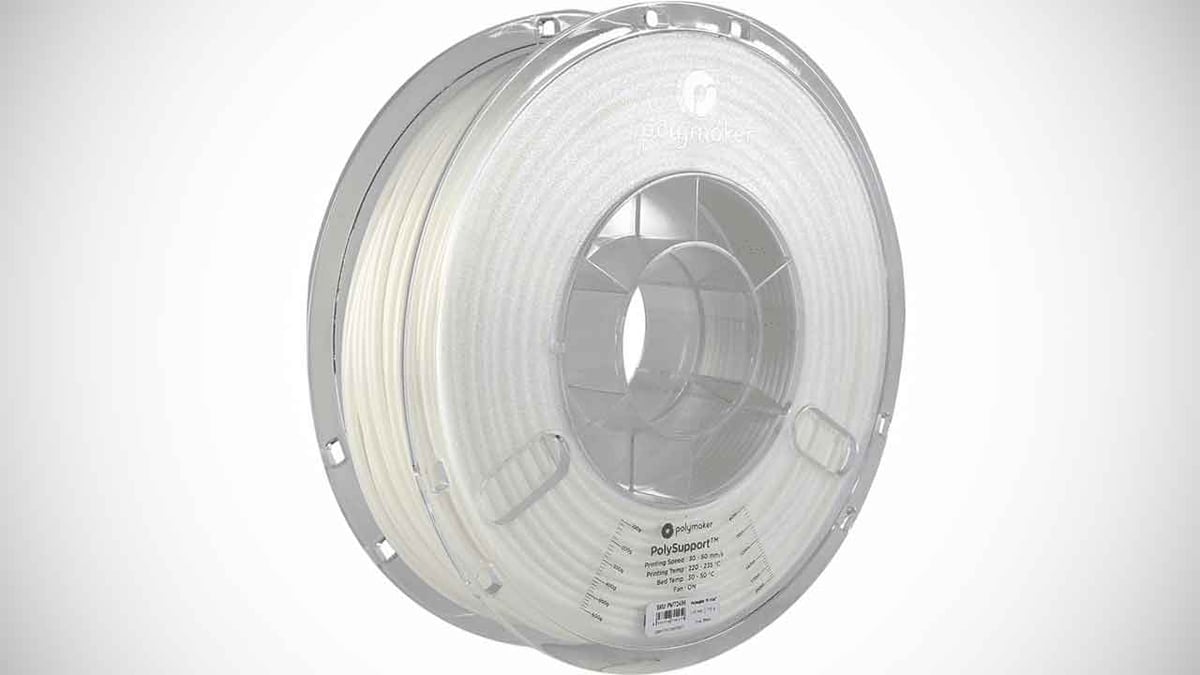
Another support material designed to have somewhat weaker bonding for easy and clean breakaway post-processing is Polymaker’s PolySupport. As a Polymaker product, PolySupport is available worldwide.
Strongest Filament
When we talk about the “strongest filament” we’re typically referring to a material’s tensile strength. That’s what you’re going to want if your material needs to hold up against a heavy load or pressure. However, listing by tensile strength alone might limit the 3D printers that can handle the materials here, so we’ll list a few good options to give some variety in terms of hardware compatibility (using brass nozzles).
3DXTech CarbonX PA12+CF
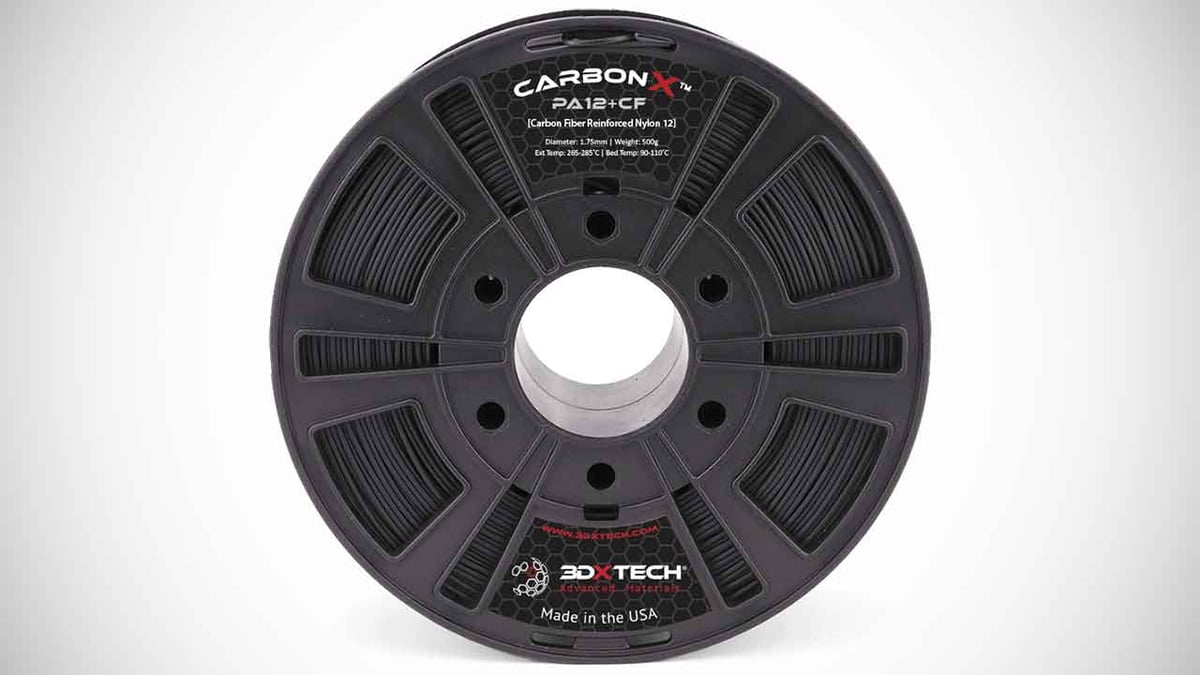
The carbon fiber-filled Nylon 12 filament by 3DXTech is the single strongest filament we could find. With a tensile strength of 72 MPa, it blows every other material out of the water. Mind the gear on your printer before you use this material. The filament should be printed at 285 °C and the carbon fiber strands are extremely abrasive. Nothing less than a hardened steel nozzle will do – this stuff will kill brass dead.
Prusament PC Blend
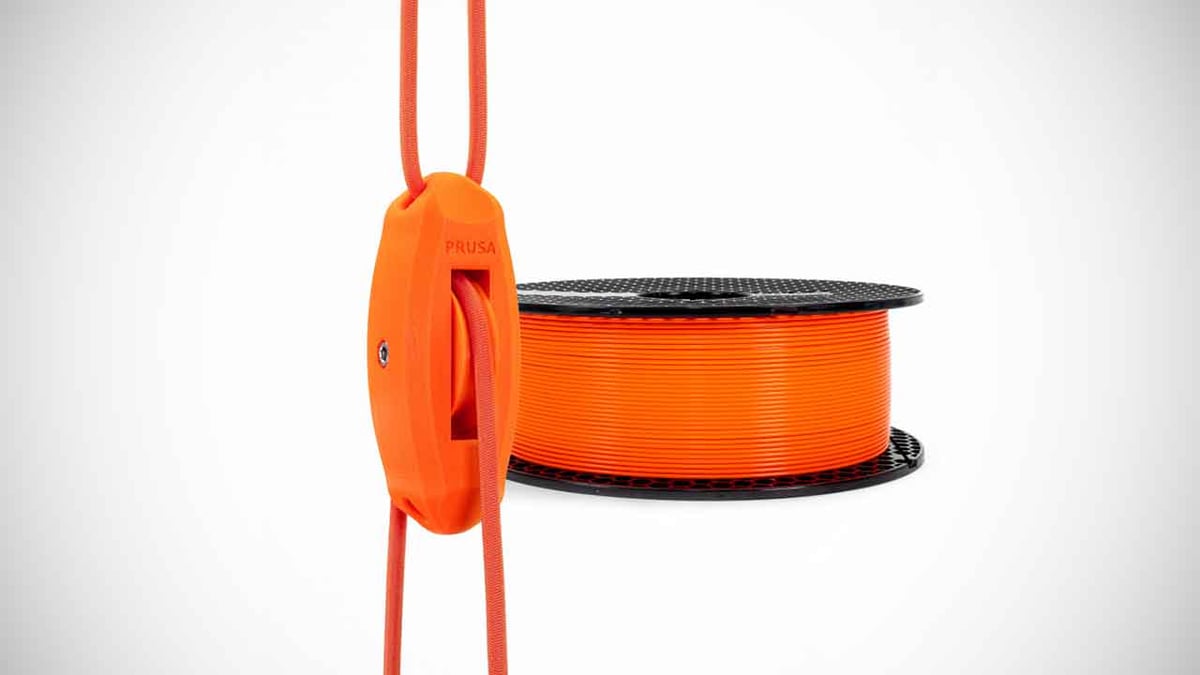
If you don’t have a hardened nozzle, a composite filament like carbon fiber or glass is out of the question – but not all is lost! Polycarbonate is able to come incredibly close to a filled Nylon’s strength in the right blend. Prusa Research offers one such blend that boasts a 63 MPa tensile strength. Printing temperatures are still very high at 275 °C.
Taulman Alloy 910
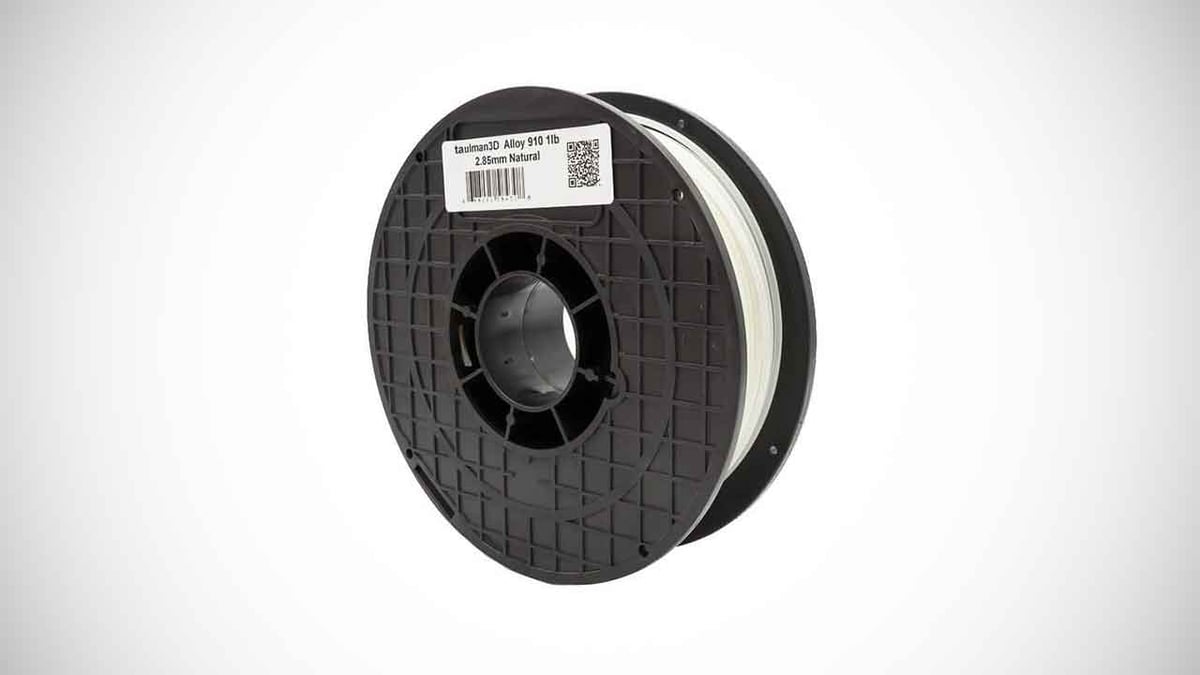
Taulman’s Alloy 910 is an impressively strong filament for not being a composite, and it includes some extra properties like chemical resistance that make it attractive for industrial purposes. The specifications say it has a PSI of about 8,100, which is about 56 MPa. It can print at a very reasonable temperature of 250 °C.
Fast Printing (High-Speed) Filament
3D printers are picking up speed. We’ve seen FDM 3D printers come out this year that have actually come through on very ambitious printing speed claims, flying past once-accepted speeds of 80 mm/s to achieve close to 400 mm/s at times. But is your filament holding you back?
Sometimes referred to as “draft” material, these are the filaments that help you push your 3D printer’s speed to its limit and get a model out quickly. As faster printing capabilities hit the market, you may need materials like these to beat a throughput bottlecap. If you’re printing at top speeds, even these filaments probably won’t make the most presentable results, but they should help prevent print failure at higher throughputs from things like under extrusion.
Treed Gonzales High-Speed PLA
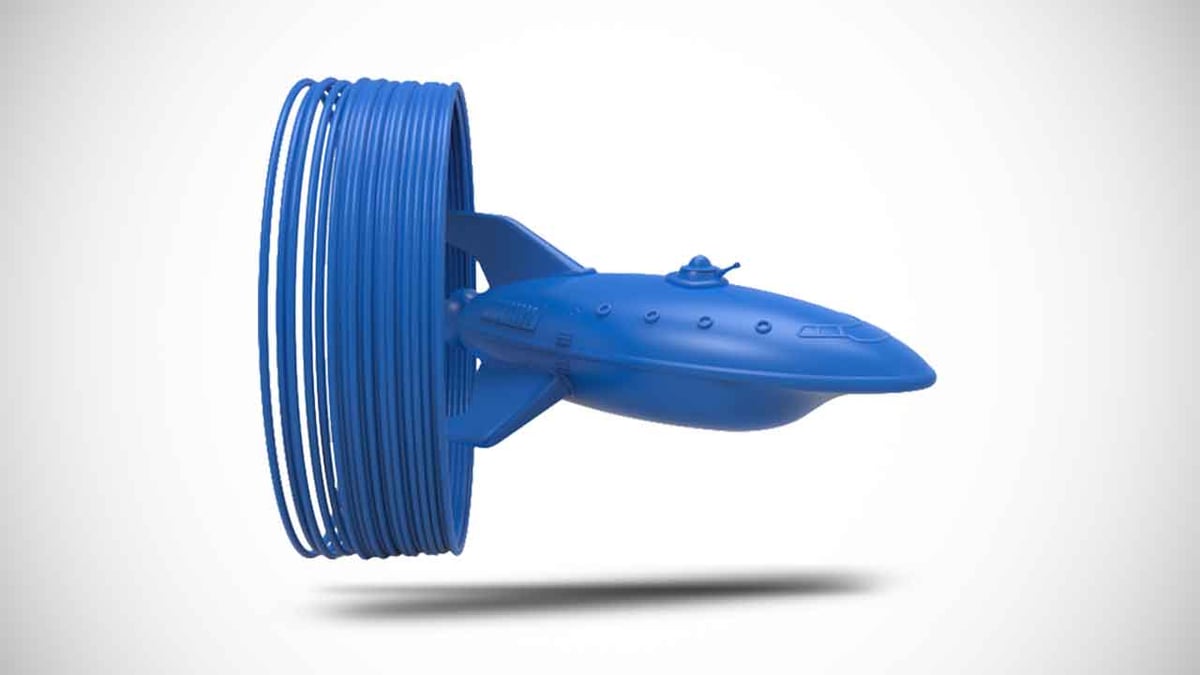
Treed is an Italian material developer that just recently gained our attention. All of its materials really stand out and are marketed in an application-driven way. Gonzales, specifically, is a high-speed PLA filament that the company claims can print up to 200 mm/s with “maximum precision.”
BuMat Elite High Speed PLA
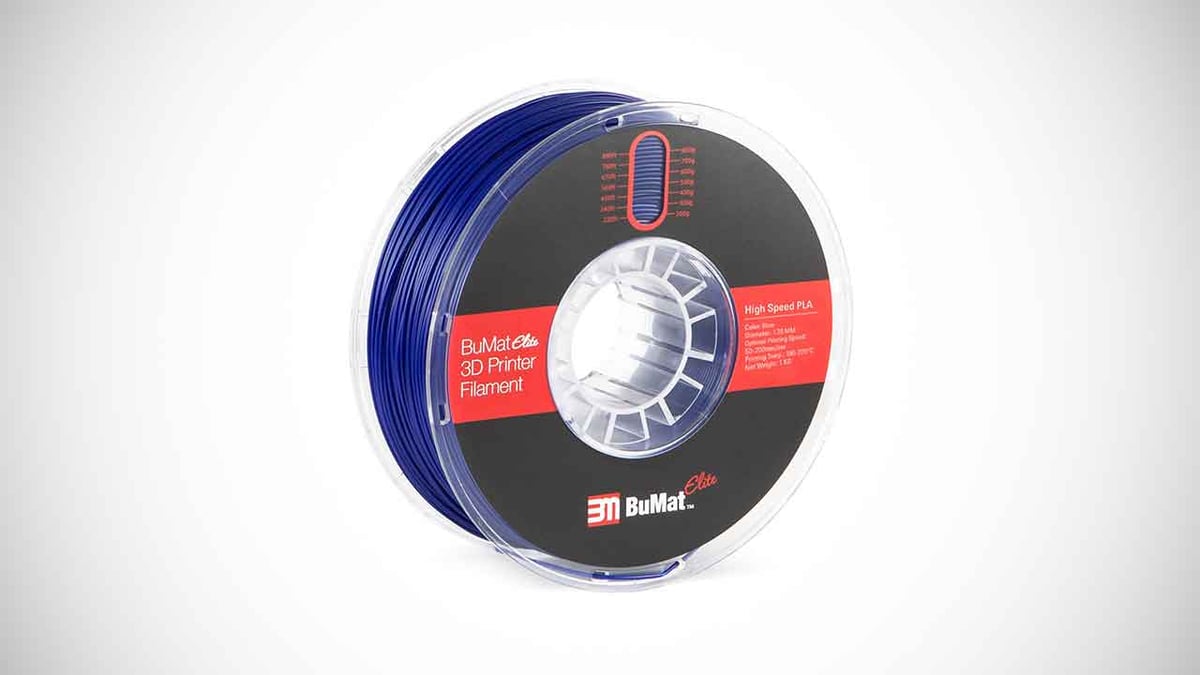
BuMat Elite is an American manufacturer offering high-speed PLA that promises precision 3D printing up to 200 mm/s. For a nice bit of variety, it comes in four colors: red, green, purple, and orange.
Overture High-Speed TPU
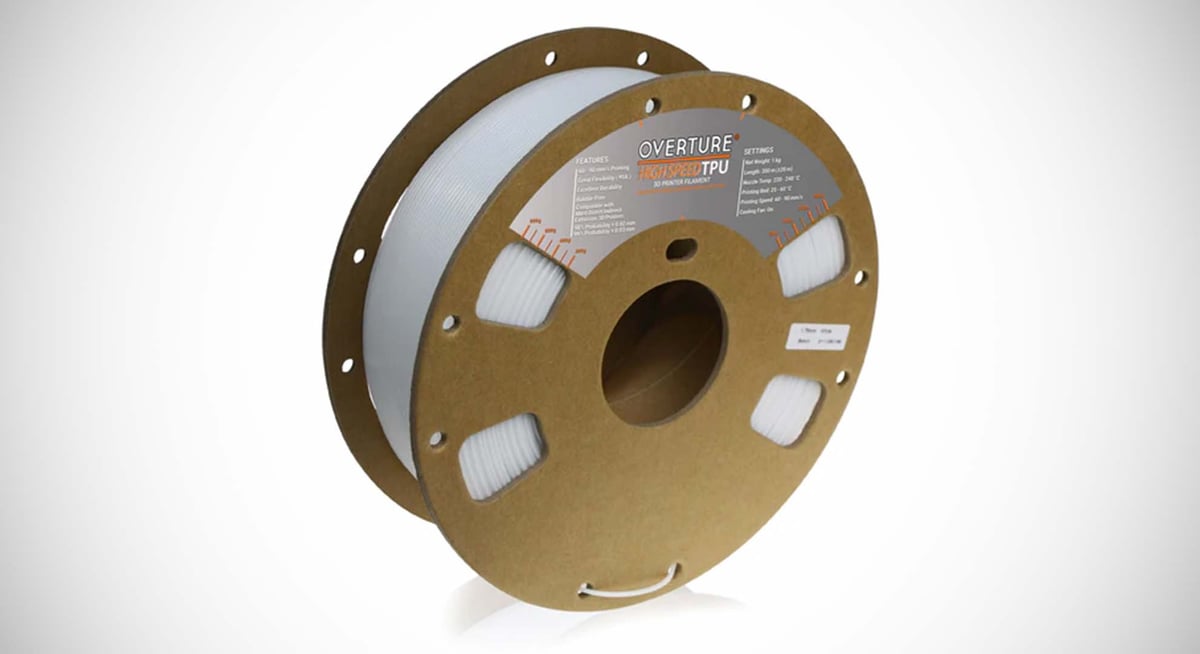
Getting the best results while printing with flexible materials usually requires printing at slower throughputs than with materials like PLA. Overture is trying to solve for flexible printing speeds with its High-Speed TPU. Overture says the material can print at speeds of 60-to-90 mm/s, which is a normal range for reliable PLA printing.
BASF Ultrafuse PLA PRO1
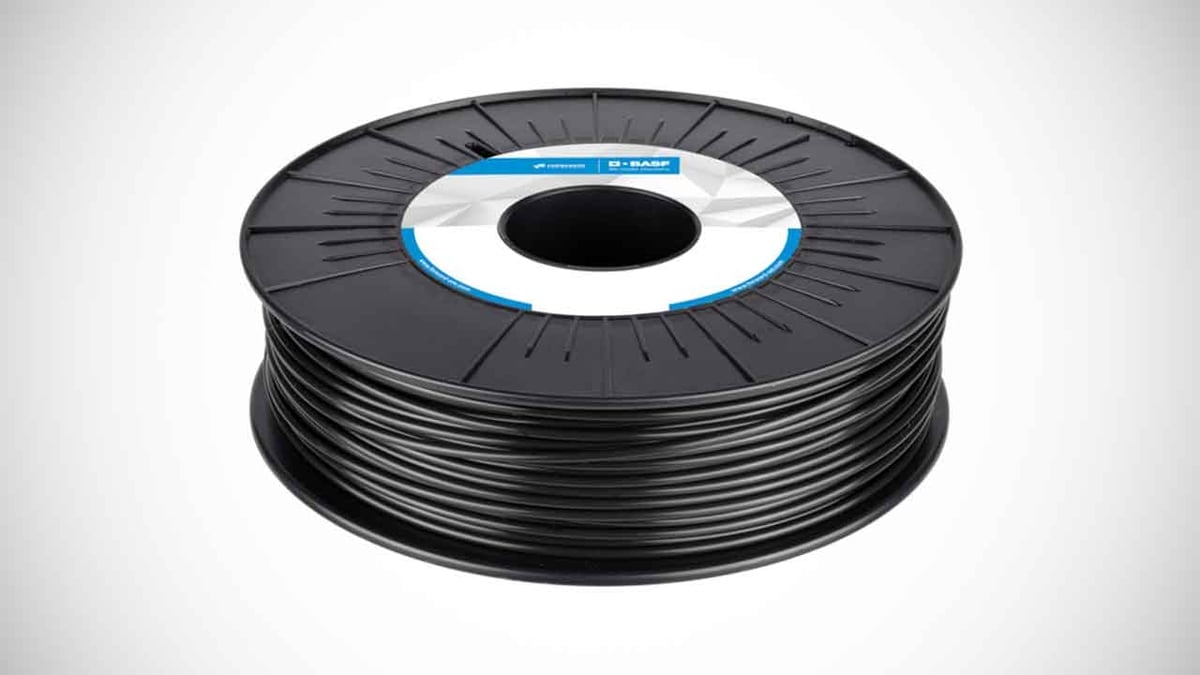
BASF is one of the world’s largest material providers, mostly supplying industrial professionals. Its high-speed filament is listed as a little slower than others here in the specs but, at 120-to-150 mm/s, it’s fast enough to be worth a mention.
Soft Grip (Flexible) Filament
Flexible filaments also make great solutions for soft-touch components of a print, like a grip. When you’re buying a filament for this, pay attention to the Shore hardness: a measurement of how hard the material is. There are a lot of resources to help you get an idea of how tough a material will be based on its Shore hardness, just be sure you pay attention to the letter grading used: generally lower numbers are softer, but 10A is as soft as a rubber band while 10D is about a tire.
Recreus Filaflex 60A Pro
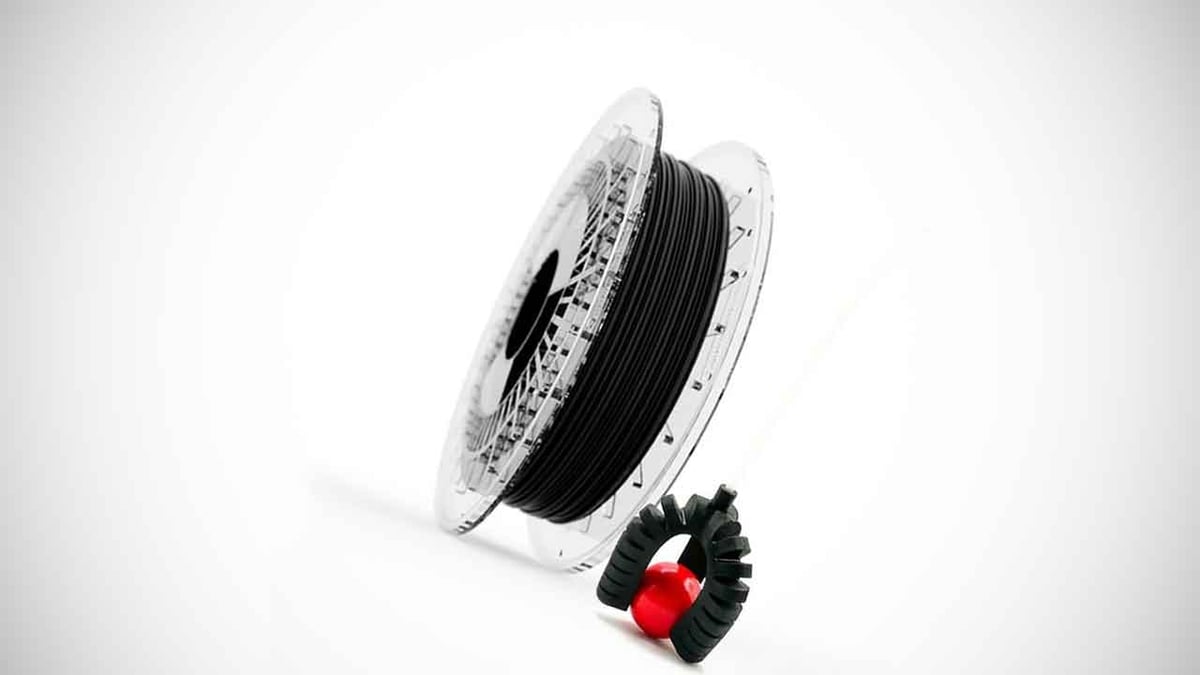
Aptly named, Filaflex 60A Pro is a flexible material with a Shore hardness of 60A – around a tire’s rubber. We’ve put this first because we feel it’s the right Shore hardness for most soft grips, but there are softer and harder options below. It’s worth noting, Recreus’ Filaflex series has a variety of filaments with varying Shore hardness, including 70A, 82A, and 95A.
PORO-LAY LAY-FOMM 40
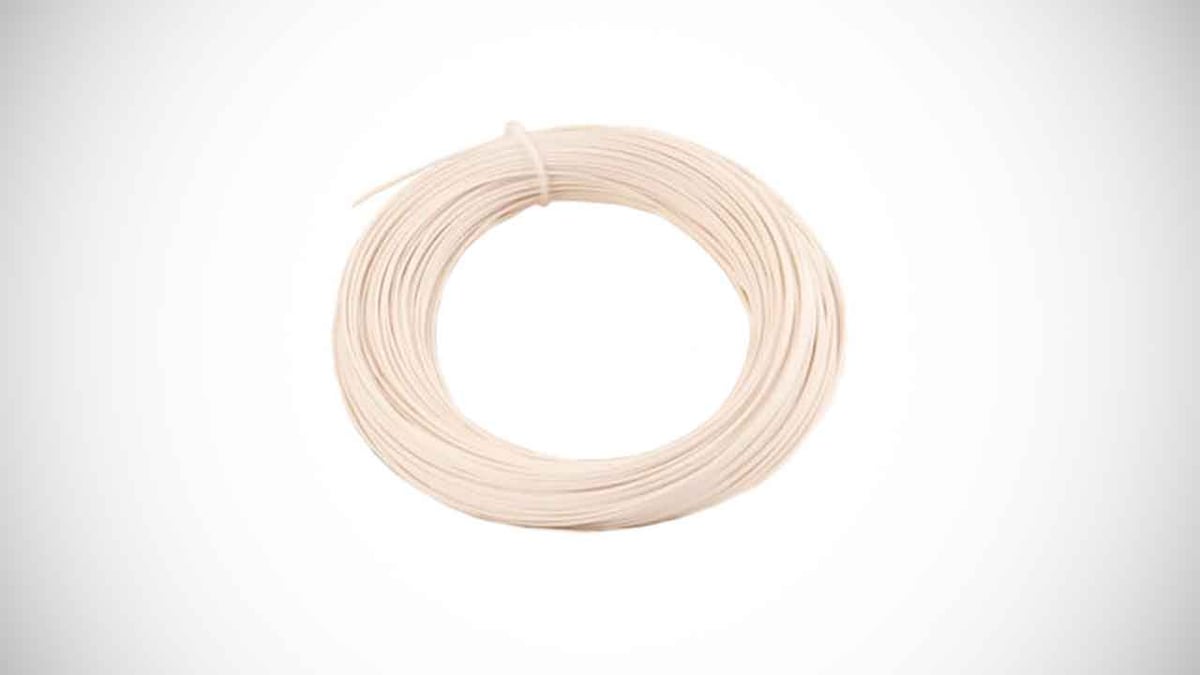
If you want to go as soft as you can, you’ll need to get a little foamy. PORO-LAY offers a porous filament with a Shore hardness of just 40A. Beyond this, check out some of the lightweight filaments below for similar foam structures.
NinjaTek NinjaFlex 85A
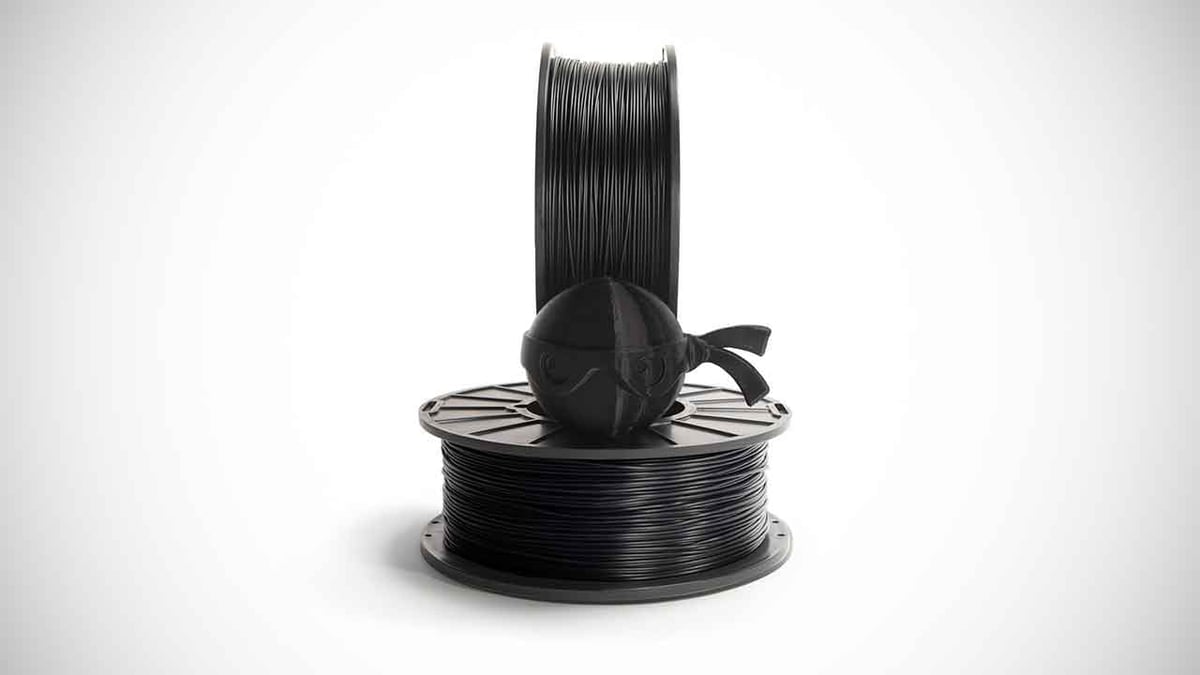
Probably the most well-loved TPU on the market, NinjaFlex is a good go-to if you’re looking for an easy-to-print flexible or soft-touch material. As expected from TPU, it’s a bit hard at Shore 85A: a little tougher than a shoe heel. It’s also a bit pricey at ~$90 per 1 KG, but it should work for many purposes.
Treed Pneumatique Thermoplastic Elastomer

This one is fascinating to us. Treed has recycled tires (yay, environmentalism!) to create a thermoplastic elastomer filament. We haven’t tried it yet, and it’s unique enough that we’re unsure how easy it would be to print with, but we think a proper rubber texture would outshine a TPU grip any day since tires rest around 60A on the Shore hardness scale. Be sure to take a look at Treed’s other flexible materials: they offer TPU, TPE-HE, and TPE-E.
Lightweight (Low-Density) Filament
Sometimes you just need to cut the weight off a part, so these filaments are specialized to give you a lightweight product. Not all will have a perfectly smooth finish — some are designed to print a literal foam – but all will print a solid part with lower density than typical 3D printing materials – resulting in a lighter product. Keep in mind that the foam options print vastly different than regular 3D printing materials, with different print settings having dramatically different results, so they’ll likely take some getting used to if that’s the route you go.
ColorFabb LW (lightweight) PLA

The first foam option here is ColorFabb’s lightweight PLA. The material foams after extrusion and nearly triples in volume, ColorFabb says, so you’re reducing your total part weight by about as much in the end. The company advises reducing material flow by 60% and mentions the expanding properties can also be used to print faster by using large layers.
Filaticum Foam
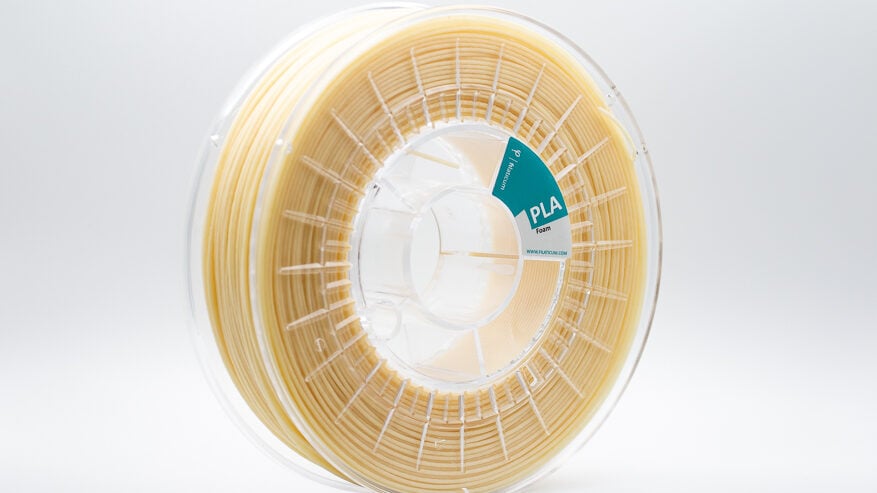
Filaticum is a Hungarian manufacturer that produces a foam filament it describes as having an “open cell structure.” According to the company, parts produced with the material have layers that are barely visible, and parts can be easily cut and otherwise post-processed like regular foams. Filaticum says the material can be printed with regular PLA settings, which would make it very easy to work with, but also say properties “can be widely modified by changing the printing settings.”
FormFutura Pegasus PP Ultralight
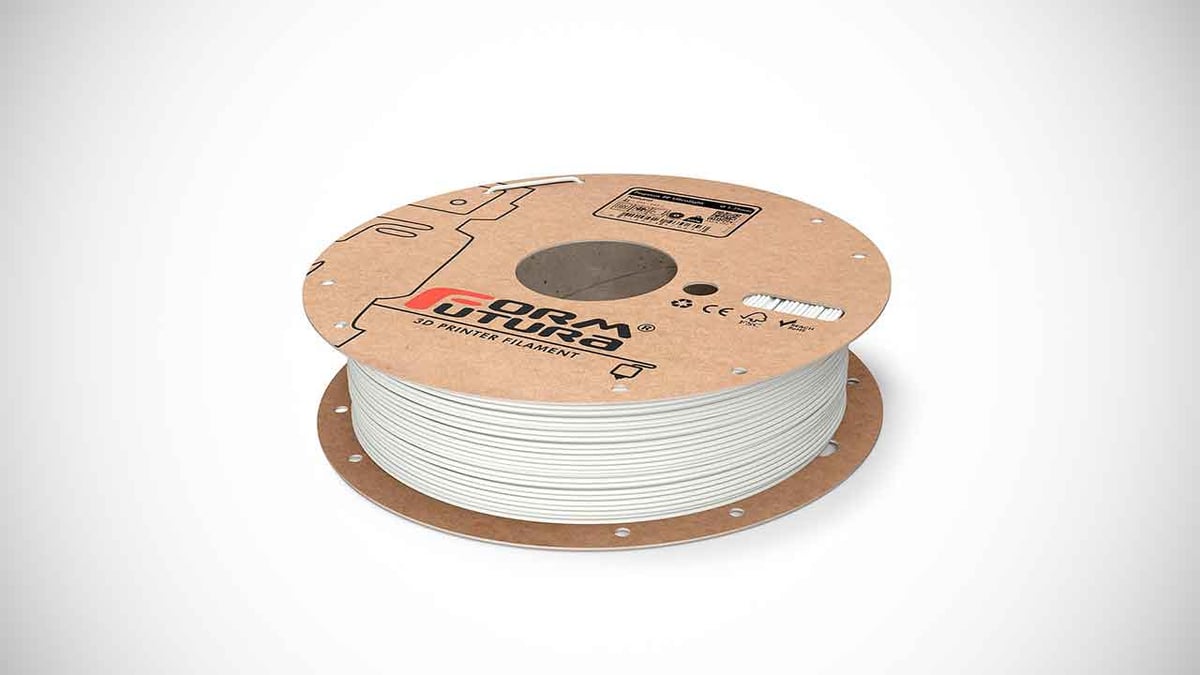
If you’d prefer something a little stronger than foam but still lightweight, FormFutura offers a PP filament “enhanced with hollow glass nanotechnology” that is 20% lighter but “significantly stiffer” than typical PP. The material has a density of 0.75 grams per cubic centimeter (g/cc), compared to an average PLA’s g/cc of 1.25.
Environmentally Friendly Filament
Though additive manufacturing eliminates a lot of waste compared to traditional subtractive manufacturing, there’s no getting around the fact that the hobby still uses a lot of plastic. Suppliers have found lots of different ways to make their material a bit less harmful to the environment, from cardboard spools to replacing chemical additives with natural ones, so you’ll get a variety of options here.
Polymaker PolyTerra PLA

We were blown away by the wealth of data Polymaker includes on its Polyterra PLA page. It breaks down the material’s carbon footprint, including the box, cardboard spool, and sealed bag it comes in and lists the carbon offset generated by its tree-planting program. The page also shares compostability data, and Polymaker quickly sent the full compost test results on request. It’s generally impressively transparent.
PolyTerra is also a material that we’ve tested. It prints as easily as you’d expect from PLA with an appealing matte finish. It’s a high-value environmental choice if you need to stick with PLA but are looking to do a touch better for the planet. Best of all, it’s offered in multiple different colors at a competitive price of ~$20: just what you’d expect from any PLA. There’s no reason not to use this stuff as your daily driver.
3D Printlife Algix ALGA

ALGA PLA filament is a PLA-like material created from algae. Algae is an abundant resource in the CO2-rich conditions of today, and its new abundance harms water supplies and aquatic life. Algix, the company behind ALGA PLA, harvests harmful algae blooms to make useful products – like this filament.
It’s worth noting that the material has had a troubled life. It’s reviewed poorly and is heavily odorous while printing. That said, it directly turns a harmful byproduct of pollution into a useful product, so it merits mention on this list and could be great for test prints and prototypes if you’re looking to keep a low (or maybe negative) environmental impact.
Francofil PLA Co-Products
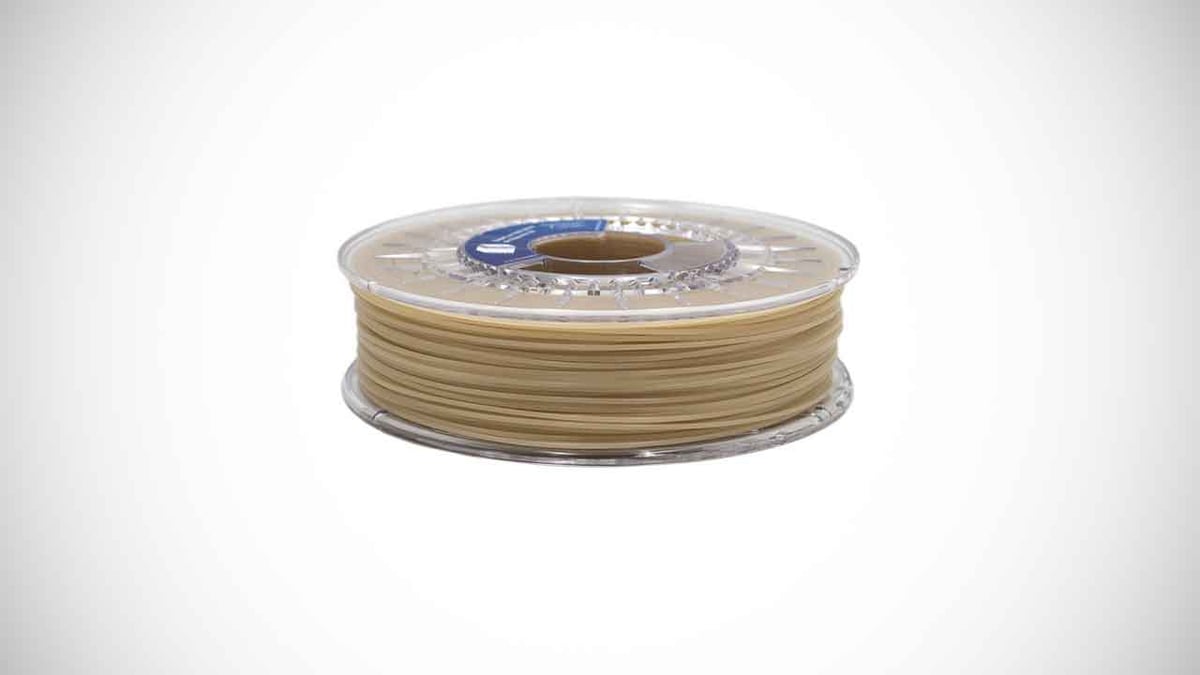
Most PLAs use a chemical dye to achieve their colors, but some manufacturers are using waste products to achieve the same results. Francofil, a French material producer, uses waste products like oyster shells, coffee grounds, and beer residues from the catering industry to color its materials. Not only is this a fantastic use of waste products, but it also makes for unique filaments.
Treed Pneumatique Thermoplastic Elastomer

Appearing for the second time on this list, if you want an environmentally-friendly flexible material this might be it. Treed’s pneumatique elastomer filament is made from recycled tires, turning abundant waste material into something useful.
Anti-Microbial (Anti-Bacterial) Filament
When you’re shopping for an anti-bacterial or anti-microbial filament, the important metric to pay attention to is Colony Forming Units (CFU) over time. Some companies will present % numbers against samples rather than representing an actual reduction in bacteria – so make sure what you’re looking at is clear before you buy. Also, mind whether the material is bactericidal (kills germs) or bacteriostatic (inhibits germ growth).
Copper 3D Antimicrobial Filaments
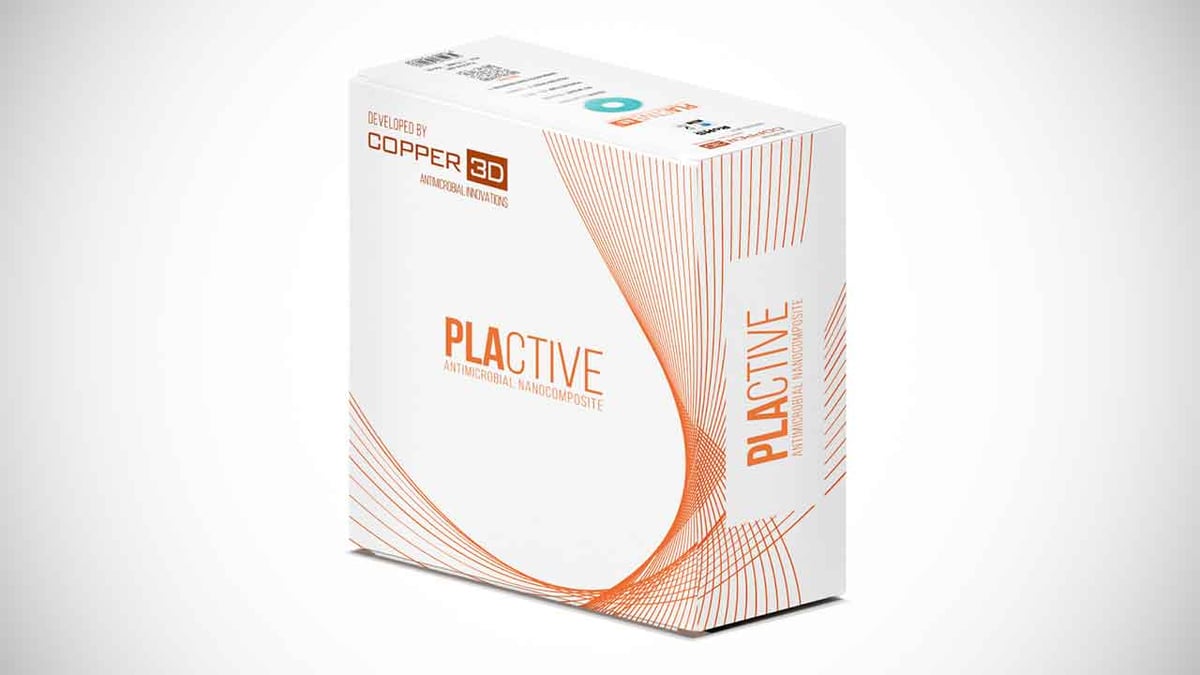
Probably the easiest anti-microbial material we could recommend is Copper3D. They have the most transparent documentation we’ve seen and have even tested the effects of their material on the SARS-Cov virus. They offer a variety of anti-microbial filaments, including PLA, flexible, and resin solutions.
FiberForce Antibacterial PLA
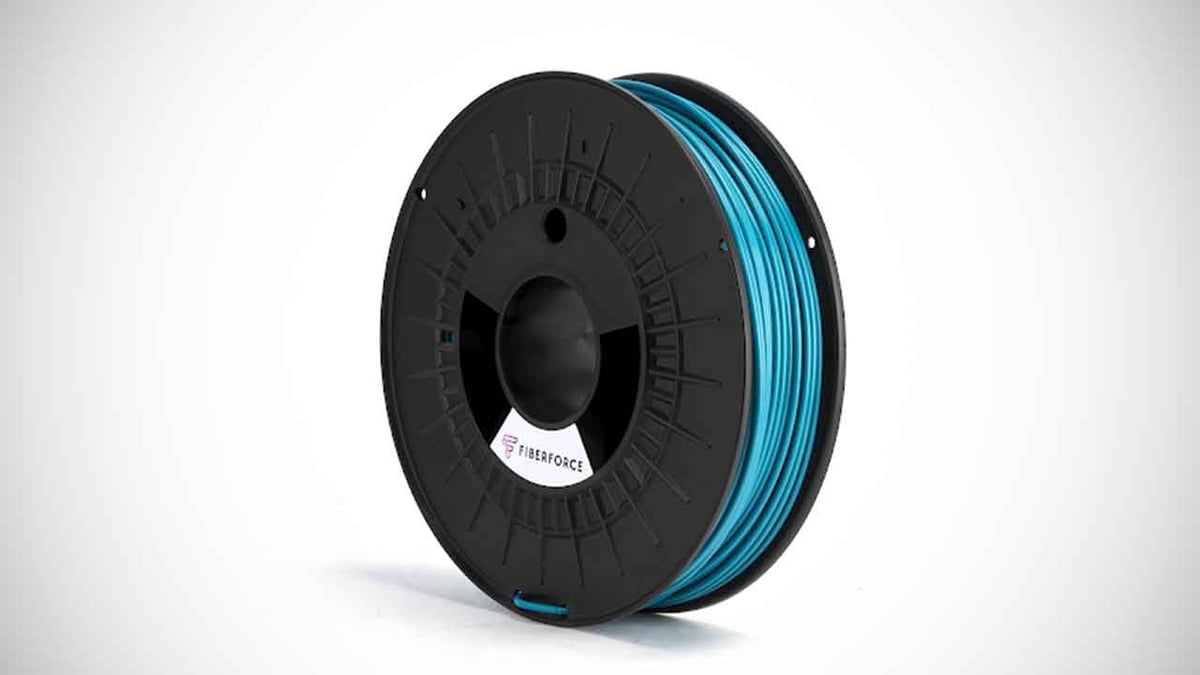
FiberForce’s anti-bacterial PLA performance tests indicate a bactericidal material with variable rates of disruption depending on species. S.aureus showed a 99% reduction over 24 hours, but E.coli only went down by 14%.
Filaticum Antibacterial PLA
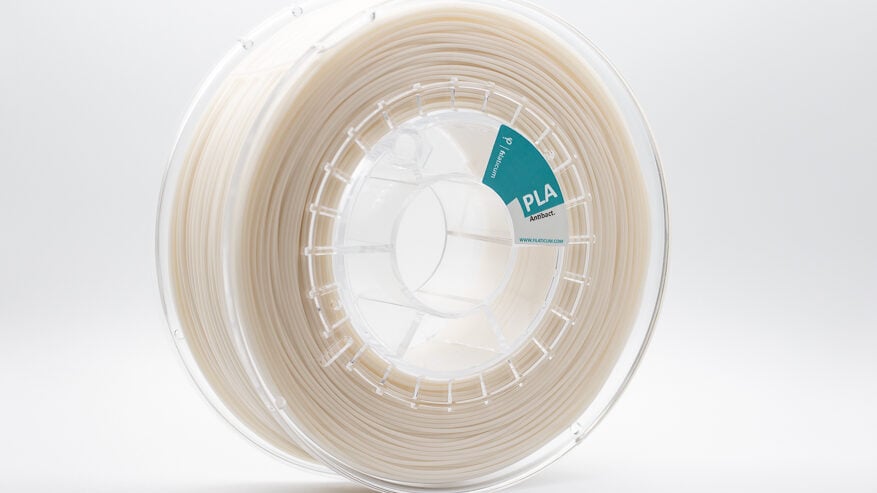
Filaticum’s anti-bacterial filament is a bacteriostatic material that uses metal ion complexes to prohibit the metabolic processes of a wide variety of microorganisms like bacteria and fungi. The company claims the effect is “lifelong” and specifies some affected organisms such as Enterococcus, Bacillus, Salmonella, and Legionella. Unfortunately, we didn’t find trial results that shared exactly how effective the material is.
XYZ Antibacterial PLA

Using silver rather than copper, XYZprinting’s anti-bacterial material claims to “inhibit bacterial growth by 99%.” That suggests it’s a bacteriostatic material rather than bactericidal, but it is significantly cheaper than the others here around $30 per 600 g.
Ceramic Filament
Ceramic filament has been around for a while, but most companies still call it “experimental”; not looking to commit to its performance since the stuff is notoriously difficult to work with. These days, ceramic-based filaments are present that don’t require firing in a kiln, but they aren’t exactly real ceramic. Still, they can provide the aesthetic you may be looking for at less cost and effort, so we’ll list some here too. The materials here should work with regular desktop FDM 3D printers, but mind you don’t buy more specialized filaments meant for ceramic 3D printers.
LAYCERAMIC
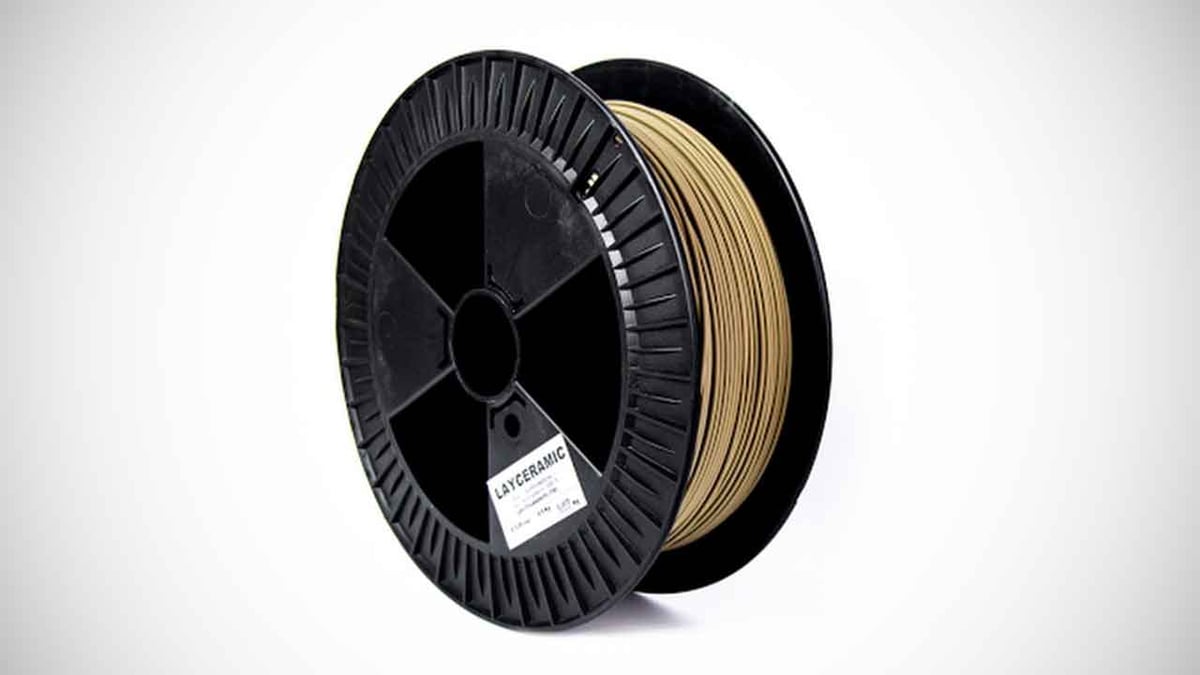
LAYCERAMIC is a sinterable ceramic material by LAY Filaments. According to MatterHackers, it’s made of ceramic powder and polymer. When fired like regular filament, the extreme heat of a kiln will debind the polymer and sinter the remaining ceramic — leaving you with a real fired-ceramic part. This does mean the part will shrink significantly, but if you can get that ratio right, it’s incredibly cool for geometrically complex pottery.
Smartfil EP (Ceramic)
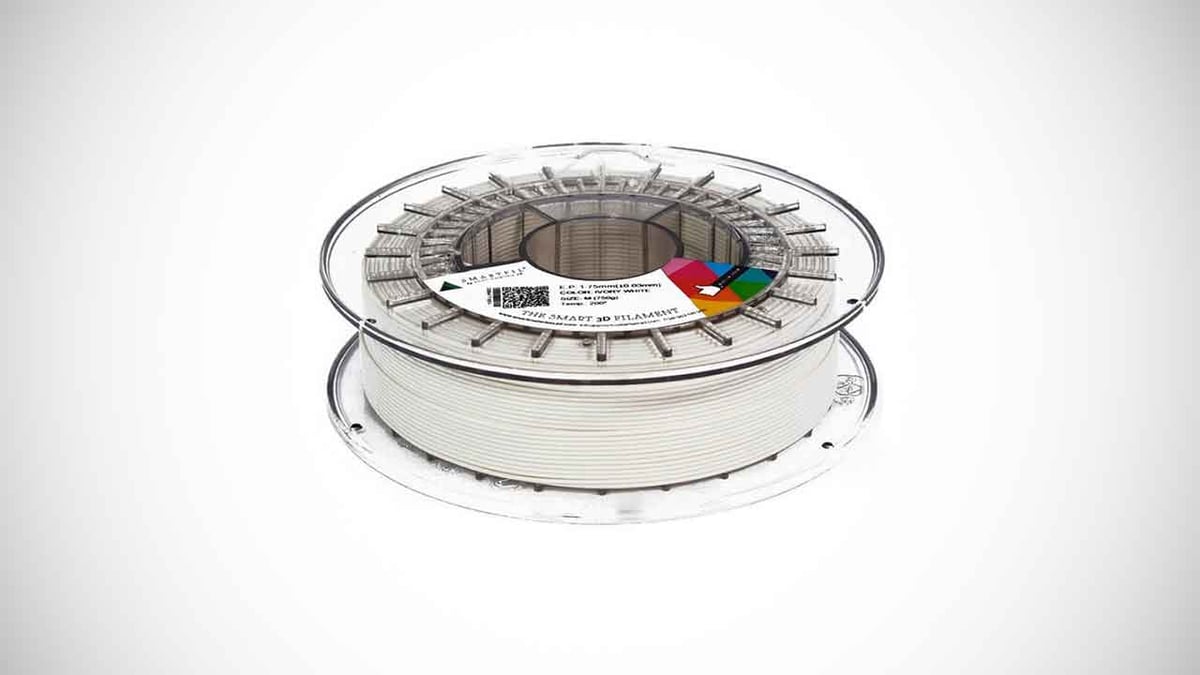
This material is part ceramic (30%), but it can’t be fired in a kiln to remove the polymer component. Instead, this material is meant to finish with a ceramic-like surface after just 3D printing. The company says that it’s easy to polish and is more rigid than PLA. It’s significantly more affordable than real ceramic filaments, so if you’re just looking for a visual effect, this is probably the best route.
FormFutura StoneFil Pottery Clay
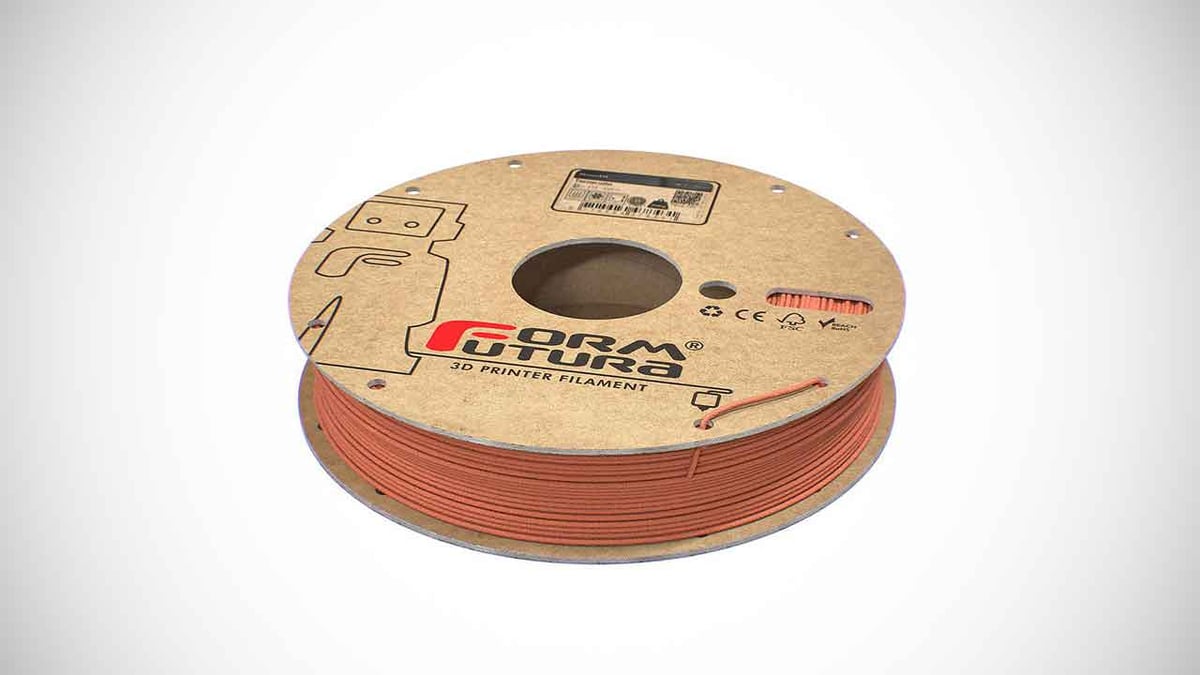
FormFutura’s StoneFil “pottery clay” filament isn’t ceramic filament, but it has a similar sediment finish due to its composition from 50% stone powder. Pay attention to the material properties, though. It’s significantly heavier than PLA (37%) and the stone powder makes it an abrasive material, so you’ll need a hardened steel nozzle to use it.
Investment Casting (Wax) Filament
If you’re looking to create a negative cast, one of the best ways to do it is with a specialized wax-like filament. These materials mimic traditional waxes used to create mold patterns. When cased and heated in a process aptly called “lost wax casting,” the wax will melt away and leave you with just your negative mold. From there, you can make copies of your 3D-printed part via injection molding.
It’s worth noting, you can use regular PLA for investment casting, but it doesn’t burn as clean as these specialized filaments. If you want the best outcome possible, these are the materials you’ll want to try.
MOLDLAY

MOLDLAY by LAY Filaments is incredibly versatile in that it can be used in both investment casting, where the 3D printed pattern is melted away in a lost wax casting process, or it can be used to make a permanent mold. This is because the material is clean-burning but also stiff enough to hold its form as a clamped mold.
PolyCast
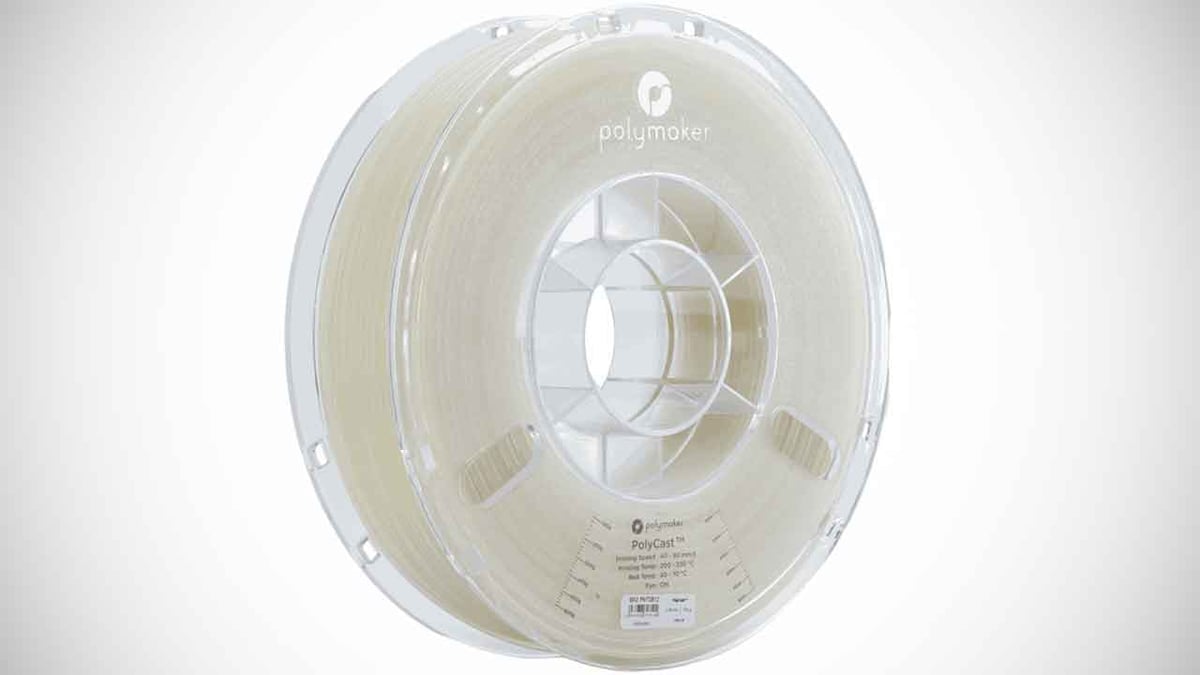
Polymaker offers its own castable material designed just for investment casting. As a specialized filament, it should burnout clean and is offered at a slightly lower price than competing MOLDLAY.
Conductive Filament
Working on a low-voltage electrical project? You can do some pretty creative things with 3D printing materials that carry a current. Just be sure that any electricity you work with is within safe limits.
Protopasta Conductive PLA
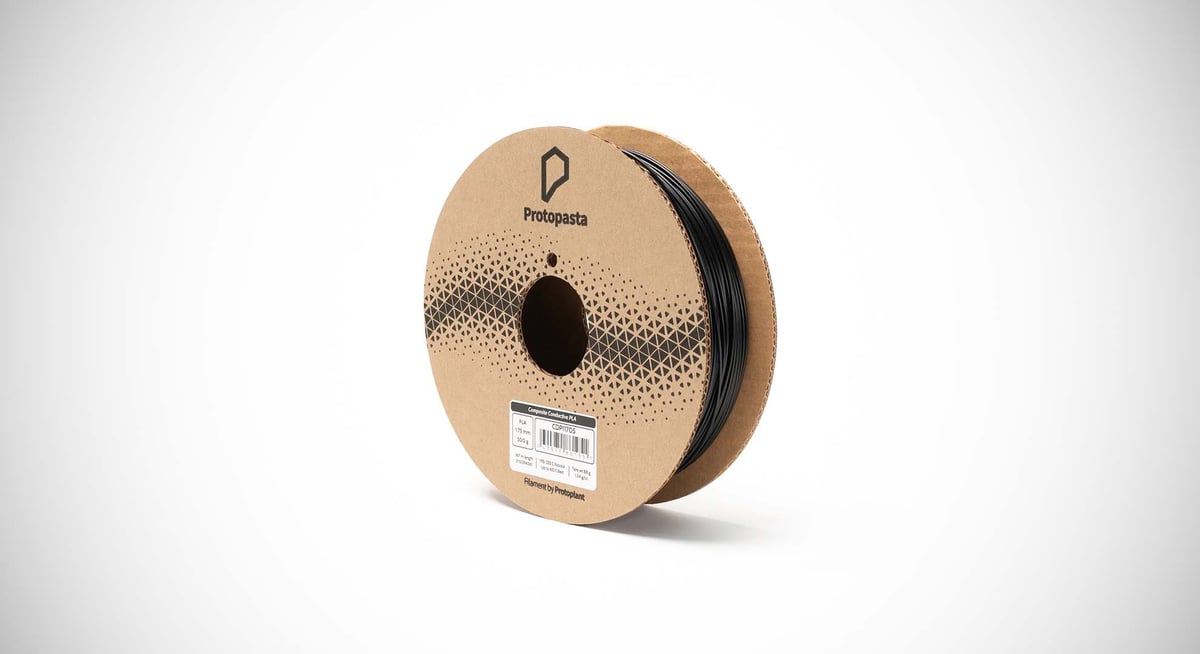
Protopasta ran a highly successful Kickstarter campaign for their conductive PLA. On its website, the company shares a lot of detail and goes over various volume resistivity in different conditions of the material. The resistivity of a 10 cm length of 1.75 mm Protopasta Conductive PLA is listed at 2-3 kiloohms.
FiberForce Nylforce CNT Conductive
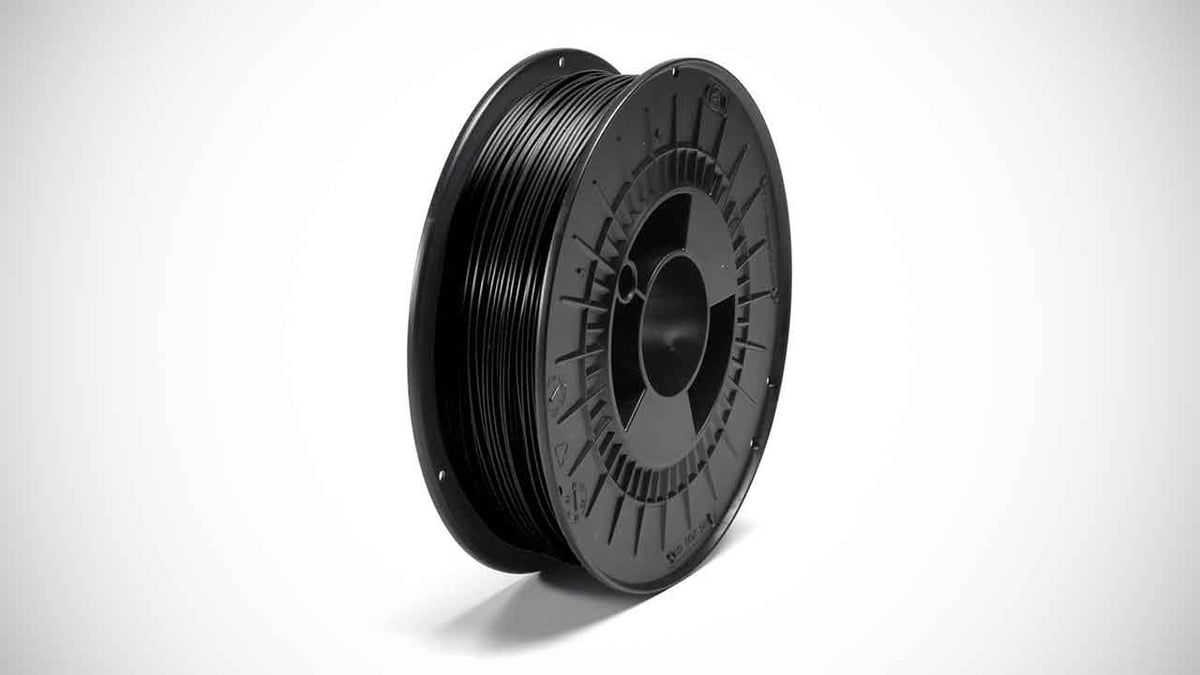
Fiberforce is an Italian material developer who says its conductive filament is “4 times less resistive than our competitors,” explaining that a 10 cm length of 1.75 mm filament has a resistance of 0.75 kiloohms.
***
If you see a missing category or supplier, you think suited for this list, mention it in the comments below! We’ll periodically check your suggestions and add them where we think appropriate. Did one of the materials here not meet the manufacturer’s claims? Let us know and we’ll make an effort to test it ourselves.
Other Filament Guides
Lead image source: Redline Filament
License: The text of "The Best 3D Printer Filaments of 2023 – Buyer’s Guide" by All3DP is licensed under a Creative Commons Attribution 4.0 International License.














